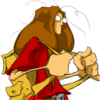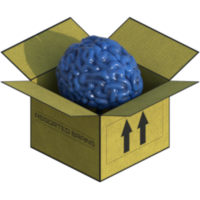Google docs so anyone can see the last version always. For a team of 1 or 2 I dont think you need anything else..a excel table on google docs with the milestones if you want to keep track of what everyone is doing (pending, doing, finished).
Keep it informal if its just for the team. Place your idea in short sentences like notes, try to have the first sections be just small sentences describing the core aspects, try to have lots of images, like concepts and mockups, this is the fast way to explain the game, to pass the idea.
Then later comes the detailed explanation, which will basically take the small sentences subject and go in detail. Have it properly and clearly indexed in titles and subtitles in the most logical way possible.
For a prototype,1 or 2 team, anything too deep is a waste of time or may become even an excuse to not start or give up half way.
something like
- your game in a sentence
- main aspects in notes
- platform(s)
- player possible actions in notes
- mockups
- concepts
(keep in mind why you want to play the game when writing those)
then the detailed
#Mecanics
-game "loop", the sequence of actions the player can do, this can be storyboard like
-gameplay detailed
-itens
-lvls
those arent a list of everything that will be on the game, its stupid to think you will get that right at first, just put your main ideas and explain so other person besides you get what you mean.
#Graphics/sound
-style, mood and technical stuff you are limited to(resolution(s), scales, file types)
-if you dont have an artist to sketch stuff here, grab references from the internet of what youre imagining
#lore
-universe
-story
-story as presented for the player(time events)
Dont fall for the trap of having a million page just for the lore...fuck the lore, this is not a book, have it at the end to not get in the way if it gets too big.Explain it in steps, do not get artsy fartsy.
The design doc will later be getting more detailed when the team members start to work on each aspect. Ppl should check to see if everyone agrees with what is being made, if there isnt any unwanted deviation.
Thats how I like it.












